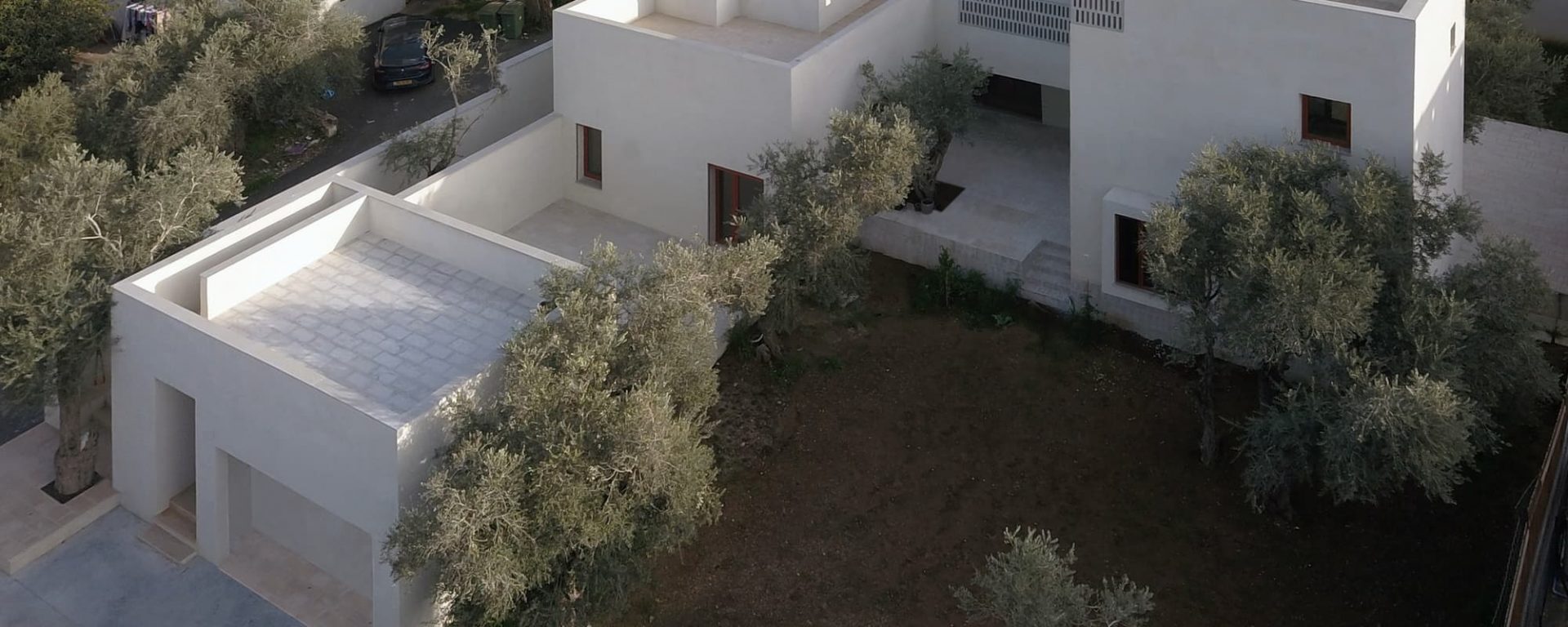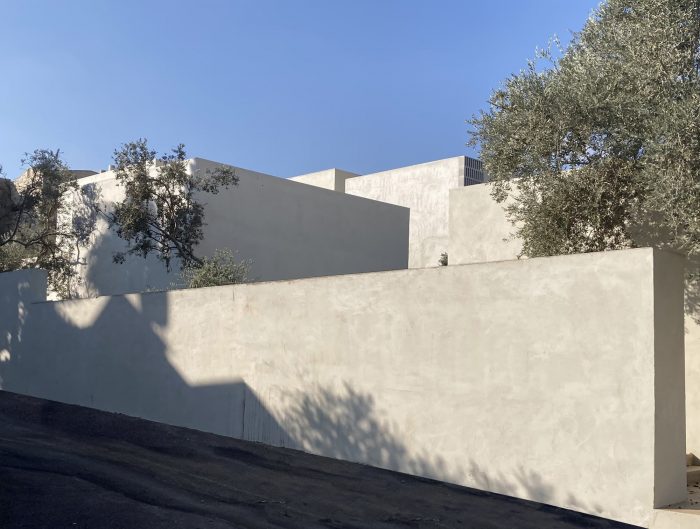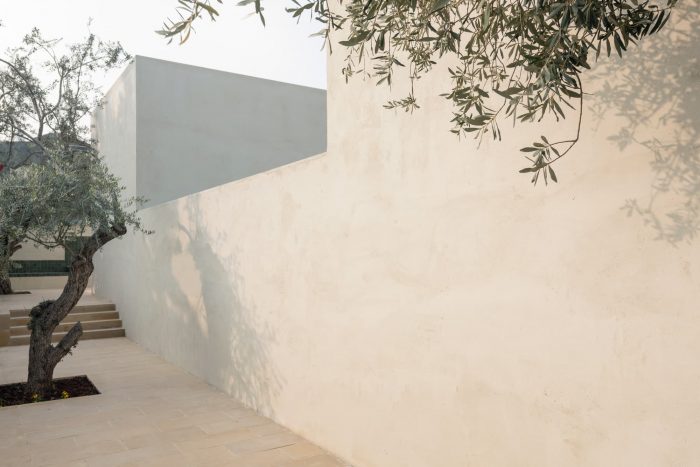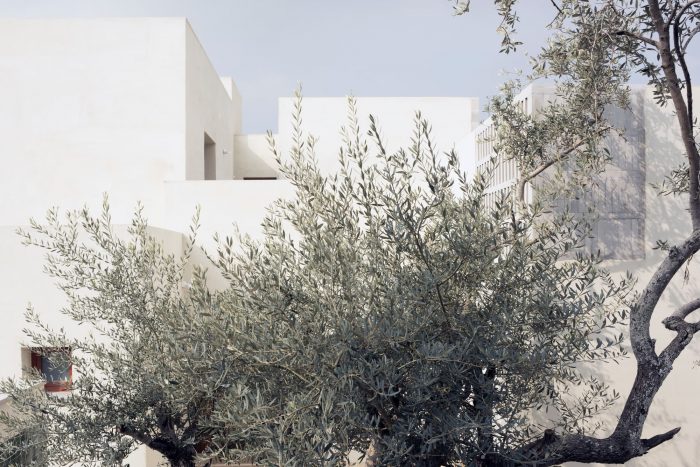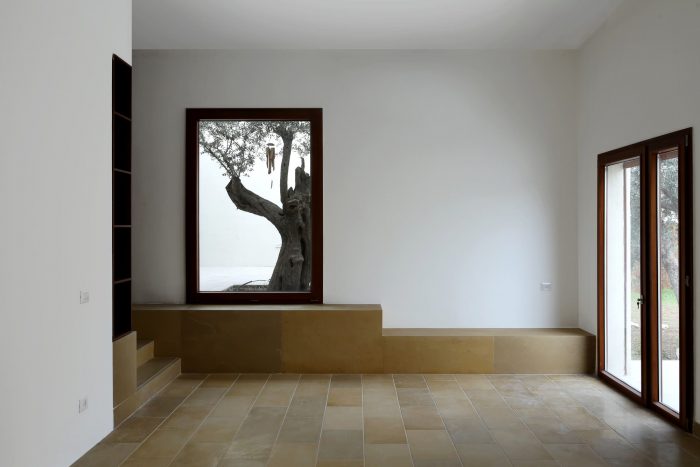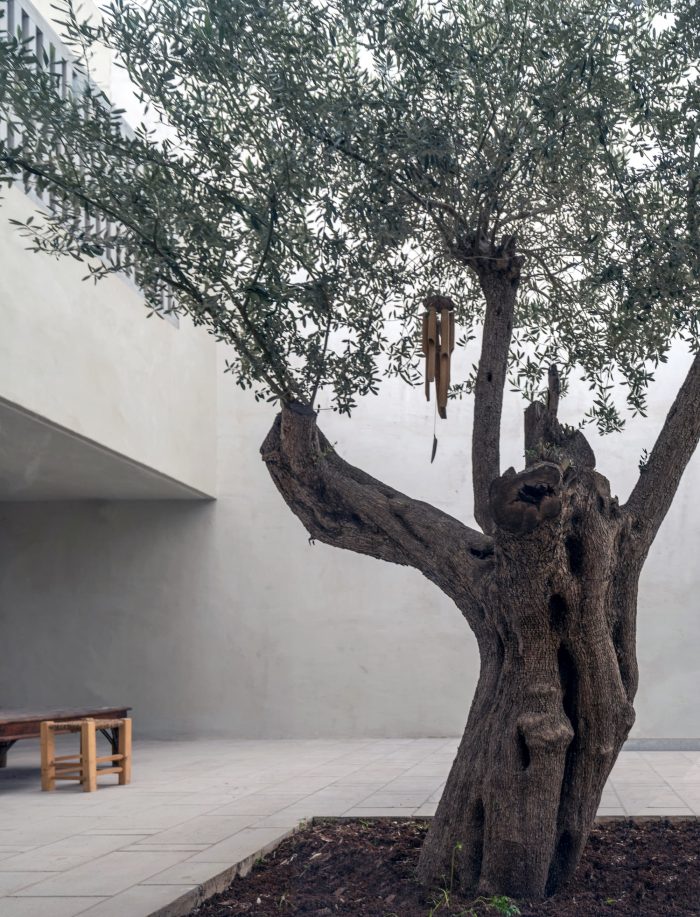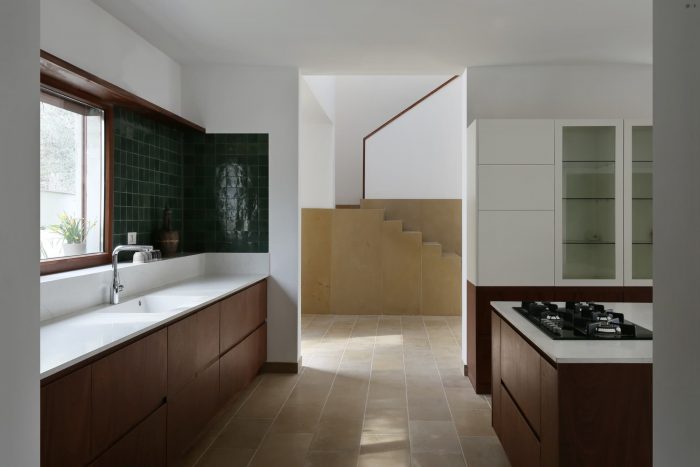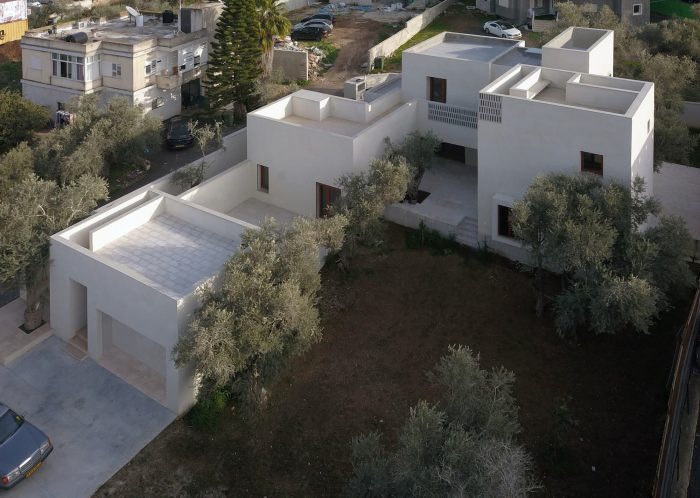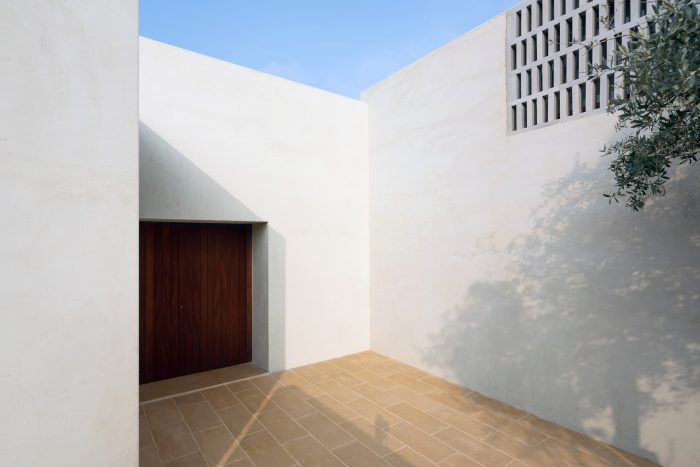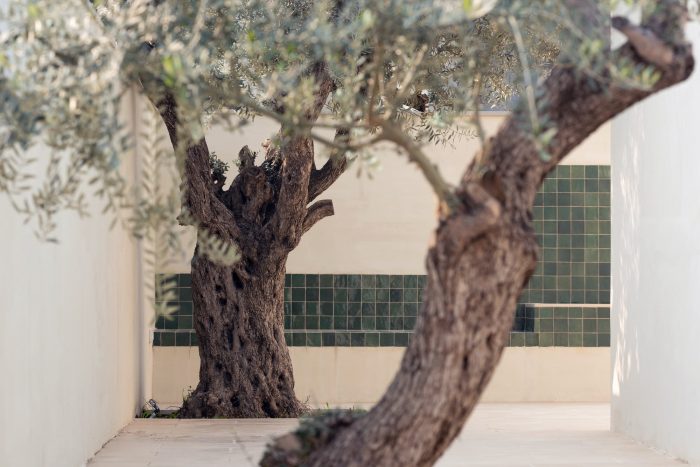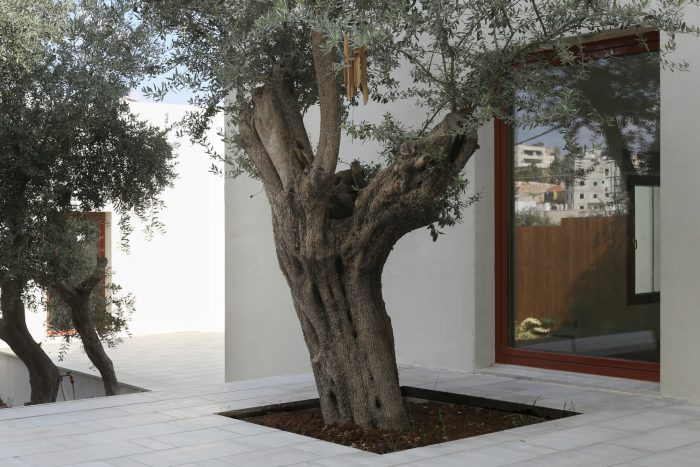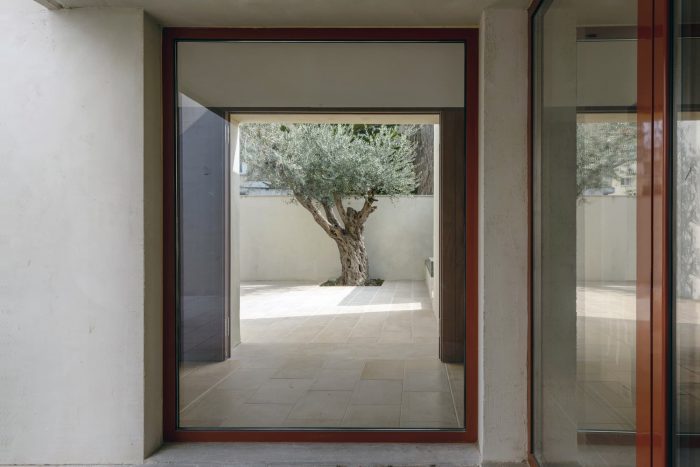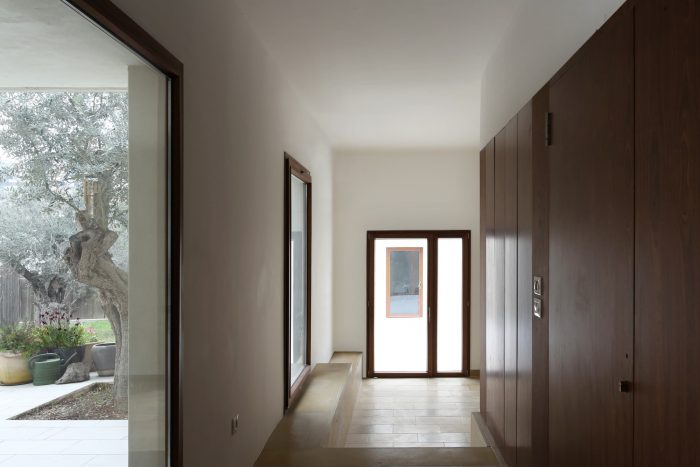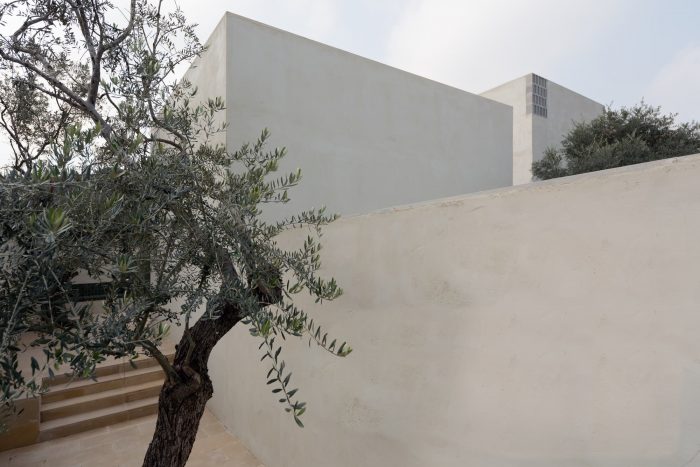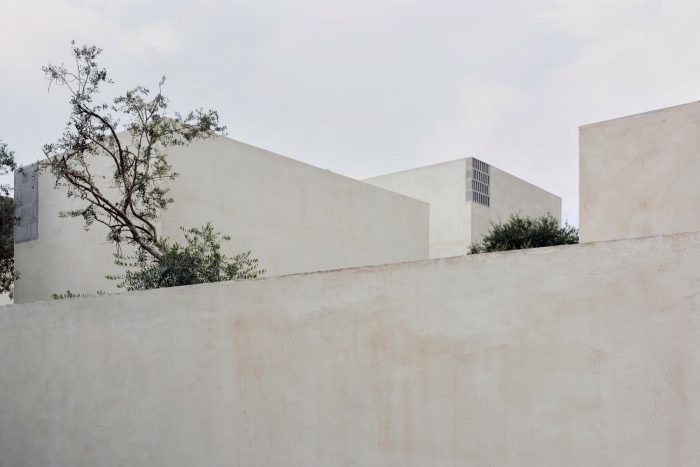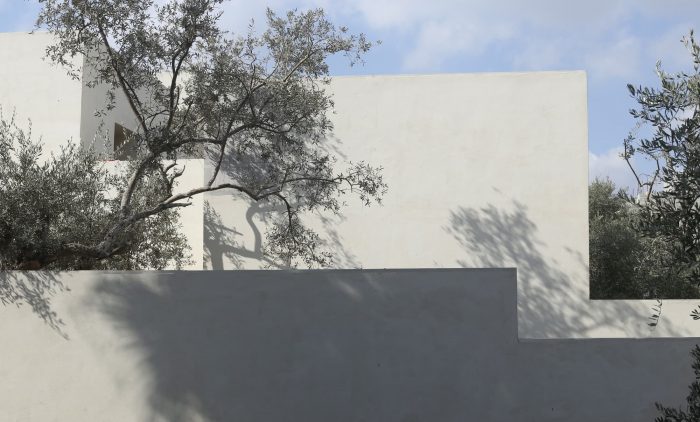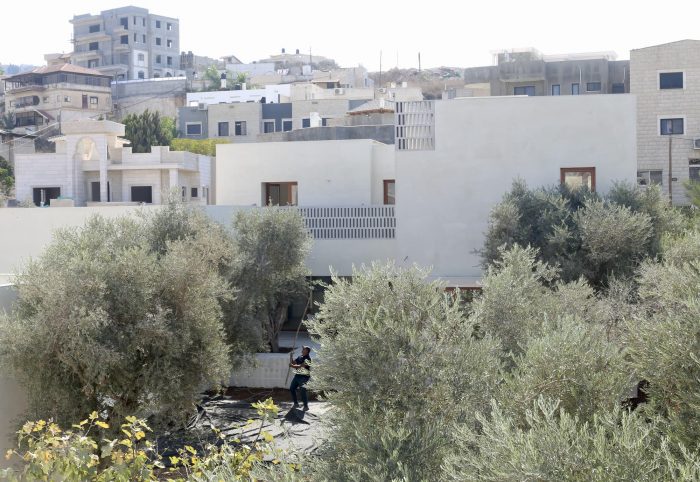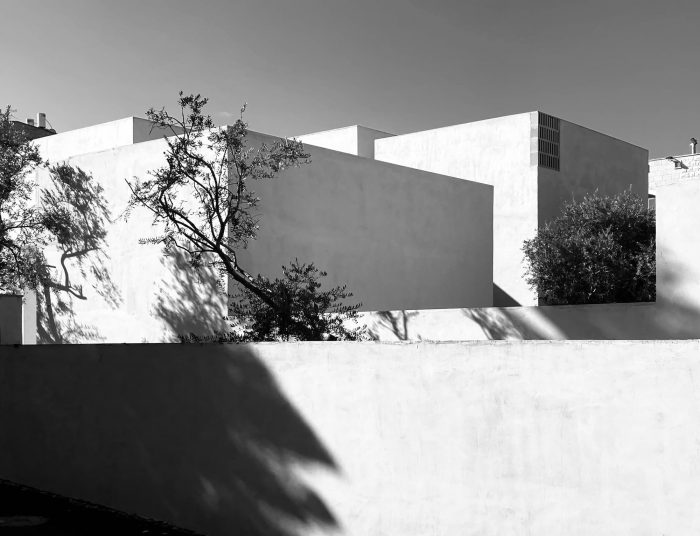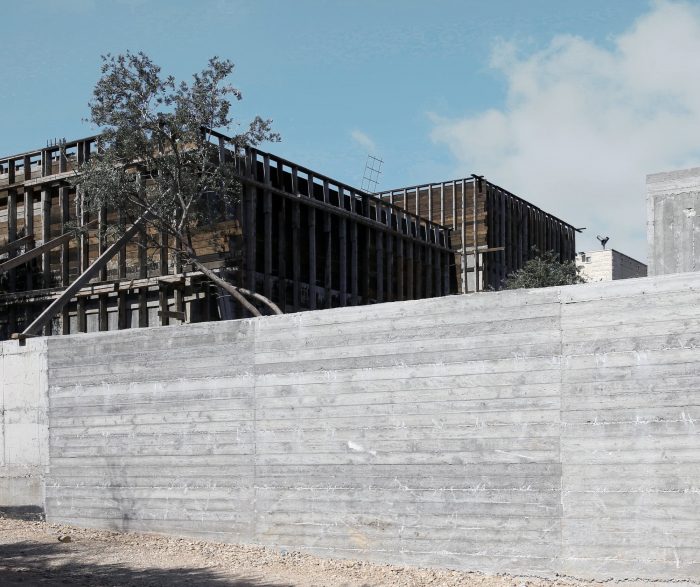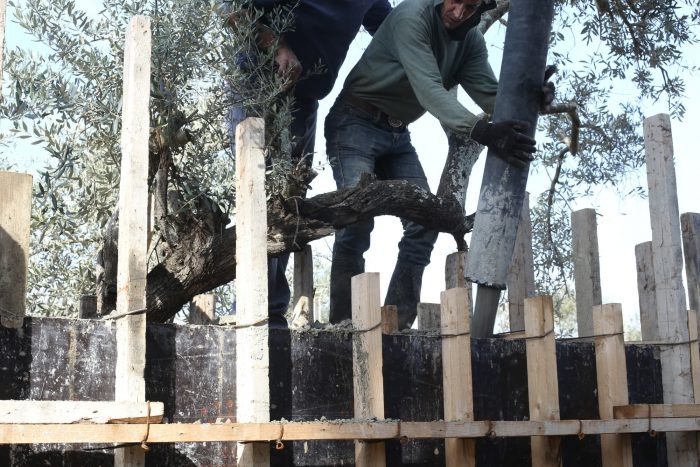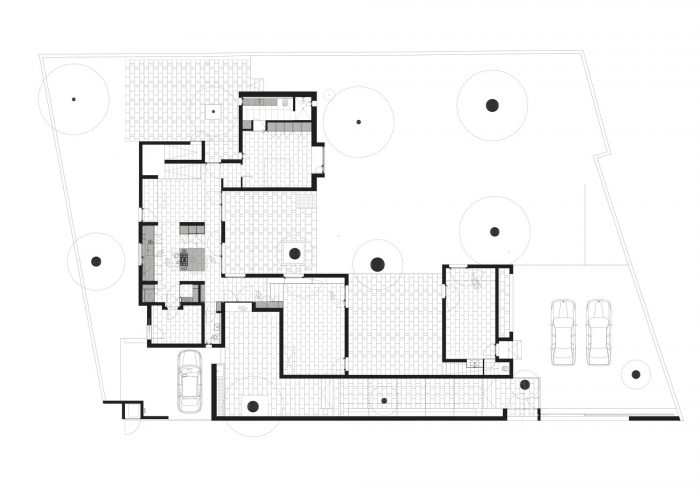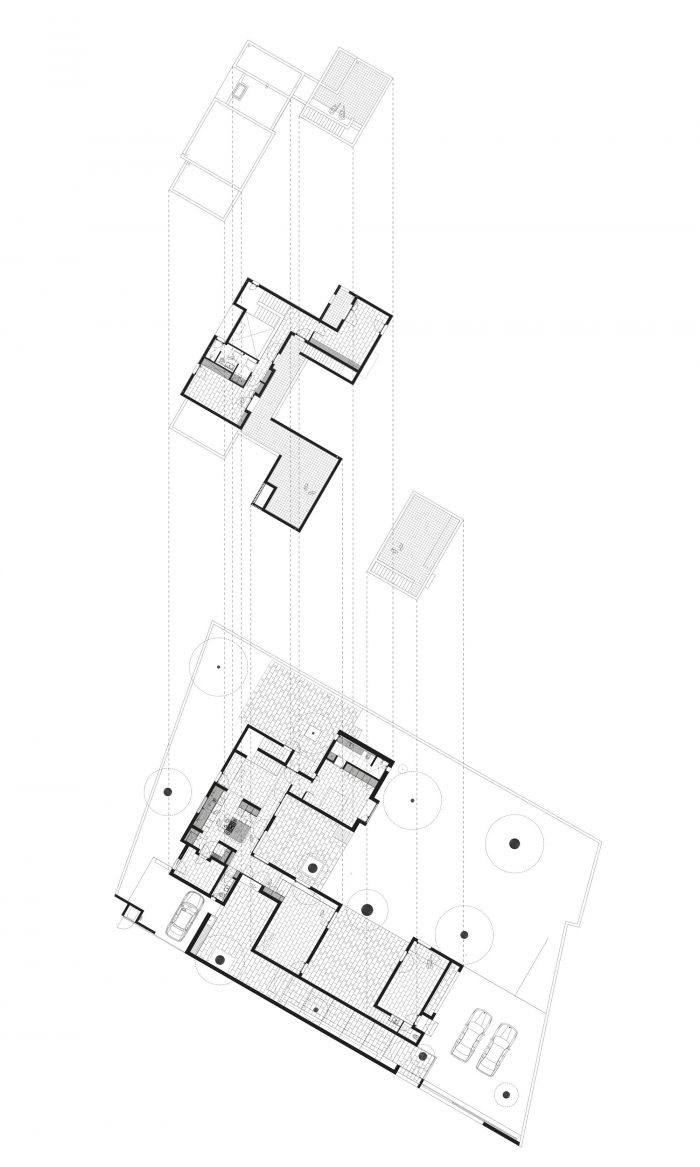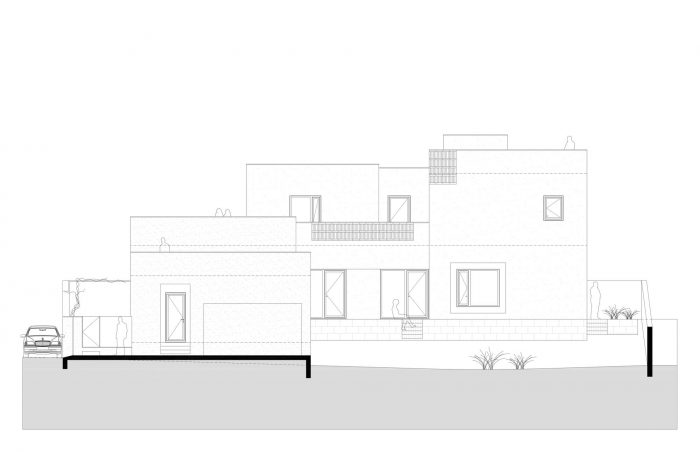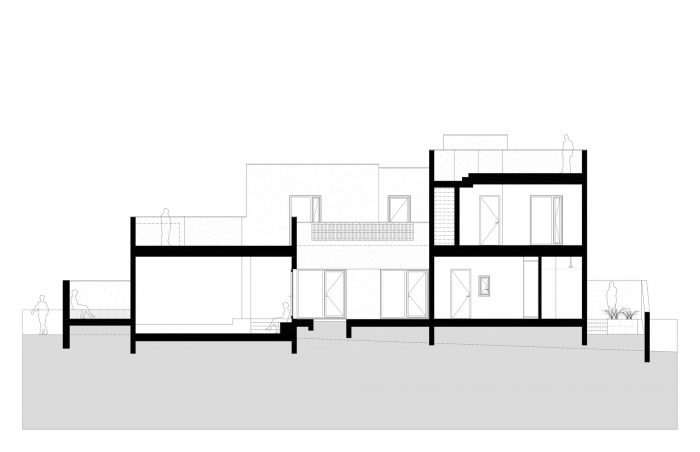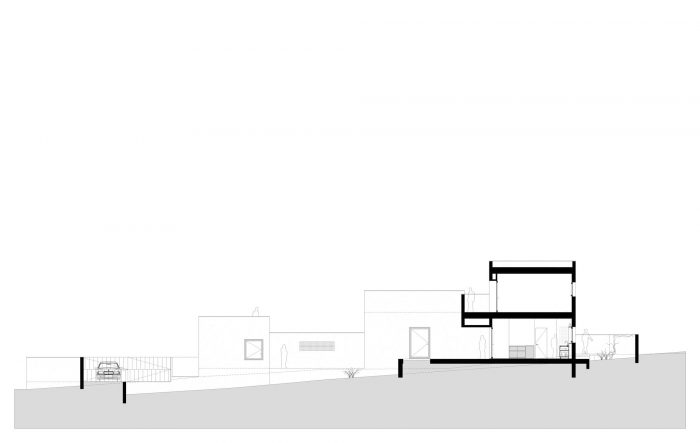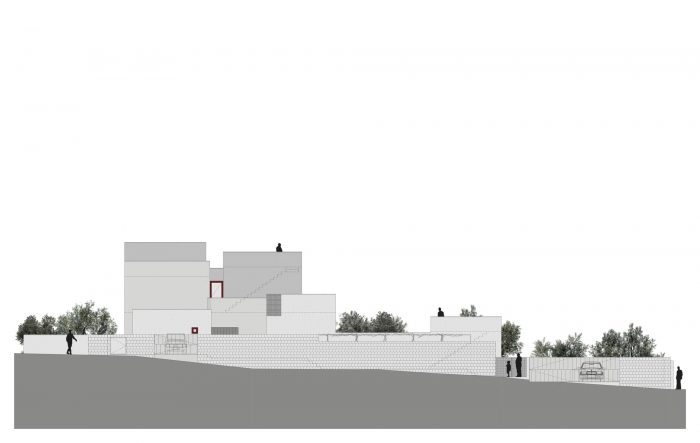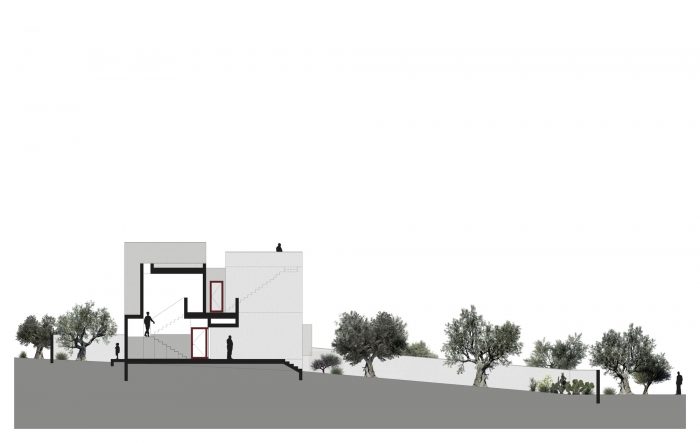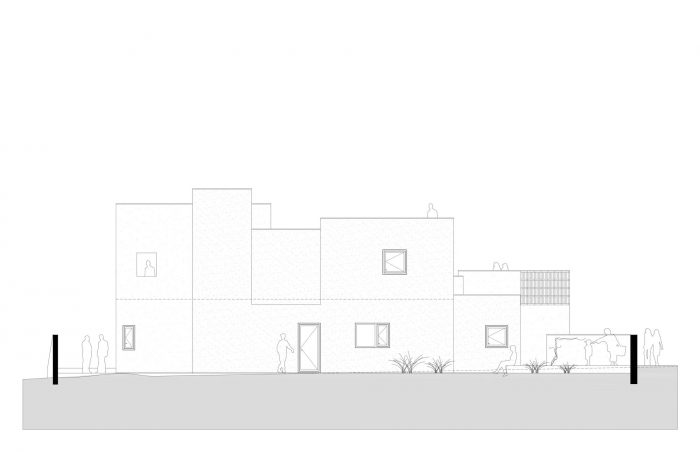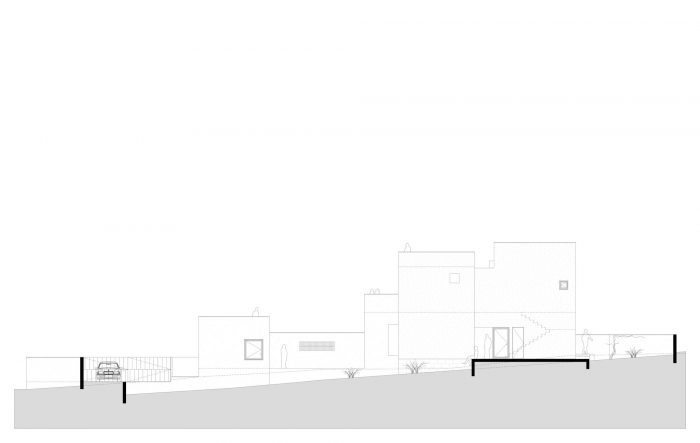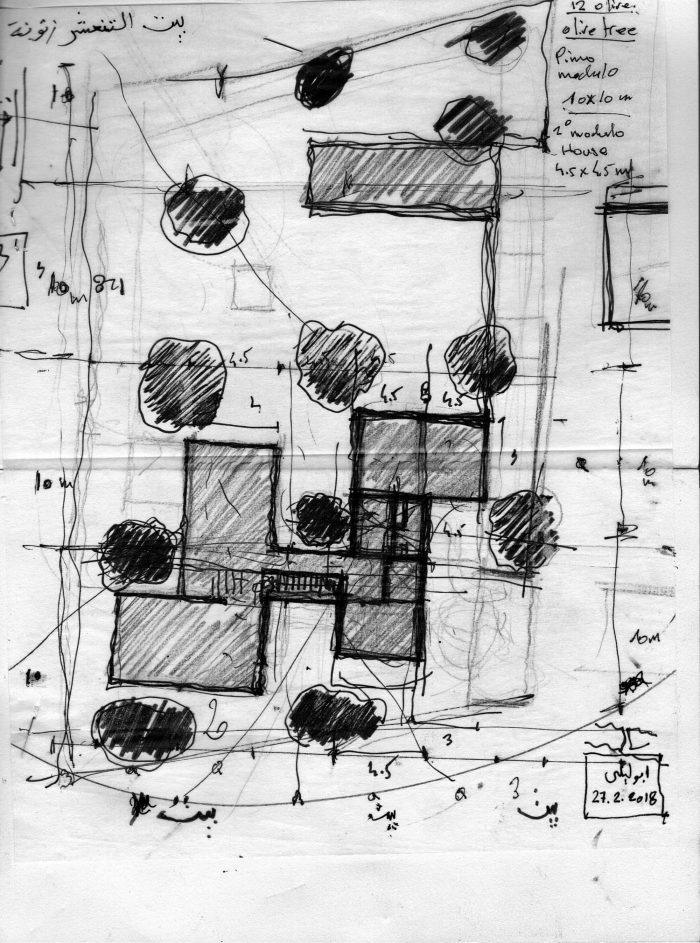可以说,1948年被摧毁的巴勒斯坦村庄构成了第一个建筑景观。它们说明了可以被称为 “不完整的场景”:墙壁的碎片、地板的残余、散落的石块堆,或一个向地平线看去的开放弧线。非正式建筑 “正是位于这种建筑景观中;它们是由未完成的、通常是未涂抹的砖块组成的;它们处于持续的建设中,被卷入一个非正式的成长和转变过程。房子存在于这种支离破碎的环境中,肯定属于当前建筑观的碎片,他们的规划试图为当地建筑提供一个解决方案,同时也提出了对巴勒斯坦房子的新解释。
The Palestinian villages destroyed in 1948 constituted the first architectural view, so to speak. They illustrate what can be termed the “Incomplete Scenes”: shards of walls, remnants of the floor, scattered piles of stones, or an open arc looking into the horizon. It is within this architectural view that the “Informal Architecture” are located; they are made up of unfinished, often un-plastered, bricks; they are under ongoing construction, enmeshed in a process of informal growth and transformation. The house exists in this fragmented context, and definitely belongs to the fragments of the current architectural view, and their planning sought to provide a solution for local architecture, while also suggesting new interpretations of the Palestinian house.
12棵树/7个立方体/5个院子–位于al-Mashhad,这是一个即使在1948年以色列建国后仍然坚守的巴勒斯坦村庄,有12棵橄榄树的房子坐落在曾经以丰富的橄榄树而闻名的农业区。只有少数的橄榄树在人口和城市扩张中幸存下来,居民住宅在没有任何事先规划的情况下取代了橄榄树。这座房子是通过在空隙和立方体之间、外部和内部之间建立一种持续的关系,在保护其周围所有12棵橄榄树的同时建造的。
12 Trees/7 Cubes/5 Courtyards – Located in al-Mashhad, one of the Palestinian villages that held its ground even after the establishment of Israel in 1948, the House with the Twelve Olive Trees lies in what was once an agricultural area famed for its plentiful olive trees. Only a few of these trees survived demographic and urban expansions and residential houses substituted olive trees without any prior planning. This house was built while preserving all twelve olive trees that surround it through the creation of a sustained relationship between the void and the cubic blocks, between the exterior and the interior.
空隙的形状–“挖掘 “出来的空间导致了巴勒斯坦石头房子的庞大结构理念的回归。房子对外面是封闭的,以便向不同的院子和空间开放,试图在内部和外部之间建立连续的关系。不同形状和大小的空隙、不同的高度和不同的边界使这些空间以不同的方式向天空开放,允许在内部和外部之间创造不同的运动,并给予通过不同屋顶的可能性,以创造新的观点。
The shape of the void – The “excavated” space leads back to the tectonic idea of the massiveness of Palestinian stone houses. The house is closed to the outside in order to open up to different courtyards and spaces trying to build continuous relationships between the inside and the outside. Voids of different shapes and sizes, different heights, and different borders make these spaces open to the sky in different ways, allowing to create of different movements between inside and outside and giving the possibility to pass on different roofs to create always new points of view.
赞美光线/赞美阴影–房子的所有内部空间都可以俯瞰一个以上的外部空间,房间分布在院子里,全天提供不同程度的光线和阴影。 这种分布使光线和空气从一个空隙传到另一个空隙,而窗户每次都能框住不同的橄榄树。墙壁变成了居住在深窗和座椅上的生活空间,向外和向内看。
In praise of light/ In praise of shadow – All the interior spaces of the house overlook more than one external space, and the rooms are distributed between courtyards, providing different degrees of light and shade throughout the day. This distribution allows the light and the air to pass from one void to another, and the windows to frame a different olive tree each time. The walls turn into a living space inhabited by deep windows and seats that look outward and inward.
房子是用不同的自然材料建造的:来自加利利的石头地板,用石头雕刻的楼梯,让人想起巴勒斯坦手工艺的使用,木窗和橄榄色的陶瓷砖。
The house is built with different natural materials: stone floors from Galilee, stairs carved in stone that recall the use of Palestinian handcrafts, wooden windows, and olive-colored ceramic tiles.
树木和植被的存在,树荫和光线与颜色的变化,重力和自然材料,以及对历史和文化遗产的引用,形成了深刻的归属感和认同感。
The presence of trees and vegetation, shade and variation of light and color, gravity and natural materials, and the references to the historical and cultural heritage form a deep sense of belonging and identity.
Architects: Elias Khuri Architects
Area : 188 m²
Year : 2022
Photographs :Thomas Dallal, Elias Khuri
Lead Architect : Elias Khuri
Illustrations : Cecilia Pruccoli
Photo Editing : newlandscapes.org
Country : Palestine

